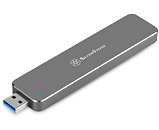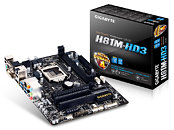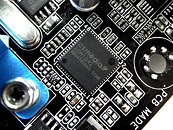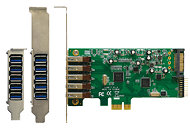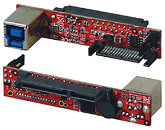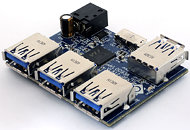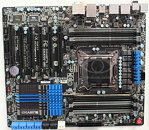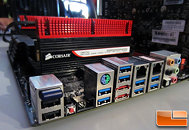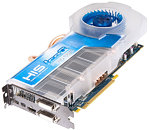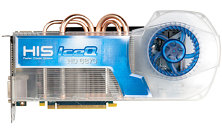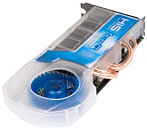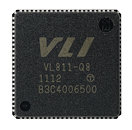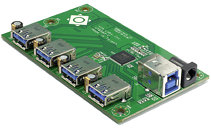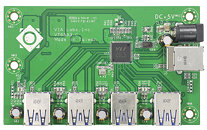Apr 13th, 2025 15:09 EDT
change timezone
Latest GPU Drivers
New Forum Posts
- Optical Disc Drive owners club (198)
- How to relubricate a fan and/or service a troublesome/noisy fan. (217)
- SK hynix A-Die (Overclocking thread) only for RYZEN AM5 users (30)
- Regarding fan noise (5)
- RX 9000 series GPU Owners Club (309)
- Overclocking Micron F-die RAM (0)
- What are you playing? (23376)
- What is going to be your next tech upgrade? just curious :) (37)
- best ram to buy for my usage and system specs? (18)
- Dell Latitude 5420 - i7 1185G7 (2)
Popular Reviews
- Thermaltake TR100 Review
- The Last Of Us Part 2 Performance Benchmark Review - 30 GPUs Compared
- TerraMaster F8 SSD Plus Review - Compact and quiet
- ASUS GeForce RTX 5080 TUF OC Review
- Zotac GeForce RTX 5070 Ti Amp Extreme Review
- ASRock Z890 Taichi OCF Review
- Sapphire Radeon RX 9070 XT Pulse Review
- Sapphire Radeon RX 9070 XT Nitro+ Review - Beating NVIDIA
- Upcoming Hardware Launches 2025 (Updated Apr 2025)
- AMD Ryzen 7 9800X3D Review - The Best Gaming Processor
Controversial News Posts
- NVIDIA GeForce RTX 5060 Ti 16 GB SKU Likely Launching at $499, According to Supply Chain Leak (181)
- MSI Doesn't Plan Radeon RX 9000 Series GPUs, Skips AMD RDNA 4 Generation Entirely (146)
- Microsoft Introduces Copilot for Gaming (124)
- NVIDIA Sends MSRP Numbers to Partners: GeForce RTX 5060 Ti 8 GB at $379, RTX 5060 Ti 16 GB at $429 (123)
- Nintendo Confirms That Switch 2 Joy-Cons Will Not Utilize Hall Effect Stick Technology (105)
- Over 200,000 Sold Radeon RX 9070 and RX 9070 XT GPUs? AMD Says No Number was Given (100)
- Nintendo Switch 2 Launches June 5 at $449.99 with New Hardware and Games (99)
- NVIDIA PhysX and Flow Made Fully Open-Source (77)
News Posts matching #VLI
Return to Keyword Browsing
Lenovo Puts USB4 Connectivity in its new ThinkVision Mini LED Monitors
Lenovo has released a pair of new ThinkVision displays, namely the P27pz-30 and the P32pz-30. These office monitors not only have 1,152 local dimming zones and a peak brightness of 1,200 nits, but they also incorporate a USB4 input. Somewhat unusually for Mini LED monitors, Lenovo has gone for IPS panels and both models sport a 3840 x 2160 resolution, a typical brightness of 650 nits, DisplayHDR 1000 certification, a contrast ratio of 1000:1 and a 4 or 6 ms response time depending on mode. There's also support for 99 percent Adobe RGB and 98 percent DCI-P3 colour gamut, although the panel is still an 8-bit+FRC panel and not a true 10-bit panel. The downside you ask? A 60 Hz refresh rate, which almost feels like a crime, despite the fact that these are productivity focused displays.
As for connectivity there's little lacking as besides the USB4 input which also supports DP Alt mode and 140 W USB PD, both displays also sport two HDMI 2.1 and one DP 1.4 input and one DP 1.4 output. Furthermore there is one USB Type-C 3.2 Gen 2 input, one USB Type-C 3.2 Gen 2 output with 15 W USB PD support, four USB Type-A 3.2 Gen 2 ports, one Gigabit Ethernet port and a 3.5 mm audio output. The USB4 solution appears to be based on VLI's VL830 or VL832 endpoint devices due to lack of any kind of USB4 output. Both models also feature built-in KVM functionality, a smart sensor and an internal power supply, as well as a height adjustable stand that also tilts and pivots. The kicker is the asking price, as Lenovo wants no less than €1,699 for the 27-inch P27pz-30 and €1,999 for the 32-inch P32pz-30.
As for connectivity there's little lacking as besides the USB4 input which also supports DP Alt mode and 140 W USB PD, both displays also sport two HDMI 2.1 and one DP 1.4 input and one DP 1.4 output. Furthermore there is one USB Type-C 3.2 Gen 2 input, one USB Type-C 3.2 Gen 2 output with 15 W USB PD support, four USB Type-A 3.2 Gen 2 ports, one Gigabit Ethernet port and a 3.5 mm audio output. The USB4 solution appears to be based on VLI's VL830 or VL832 endpoint devices due to lack of any kind of USB4 output. Both models also feature built-in KVM functionality, a smart sensor and an internal power supply, as well as a height adjustable stand that also tilts and pivots. The kicker is the asking price, as Lenovo wants no less than €1,699 for the 27-inch P27pz-30 and €1,999 for the 32-inch P32pz-30.

VIA Labs VL832 USB4 Device Achieves USB-IF Certification
VIA Labs, Inc. (VLI), a leading supplier of USB4, USB 3.2, and USB Power Delivery Controllers, today announced that the VL832 USB4 Endpoint Device Controller achieved USB4 certification from the USB Implementor's Forum (USB-IF). VIA Lab's VL832 supports USB 40 Gbps operation and is now listed on the USB-IF Integrator's List under TID: 10033.
VIA Lab VL832's USB-IF Certification represents a key milestone in the USB4 ecosystem. The certified USB4 device controller with an integrated USB 3.2 USB 10 Gbps Hub, USB 2.0 Hub, and DisplayPort output, provides essential connectivity for peripheral devices such as multi-function adapters and docking stations. In USB4 40 Gbps mode, VL832 supports full DisplayPort HBR3 bandwidth (32.4 Gbps), and the USB 20 Gbps hub can enable multiple USB 10 Gbps devices to operate at full performance on supported host platforms. Both metrics are double what was previously possible using DisplayPort Alternate Mode, which is limited to 2-lanes of DisplayPort when supporting USB 3.2 functionality.
VIA Lab VL832's USB-IF Certification represents a key milestone in the USB4 ecosystem. The certified USB4 device controller with an integrated USB 3.2 USB 10 Gbps Hub, USB 2.0 Hub, and DisplayPort output, provides essential connectivity for peripheral devices such as multi-function adapters and docking stations. In USB4 40 Gbps mode, VL832 supports full DisplayPort HBR3 bandwidth (32.4 Gbps), and the USB 20 Gbps hub can enable multiple USB 10 Gbps devices to operate at full performance on supported host platforms. Both metrics are double what was previously possible using DisplayPort Alternate Mode, which is limited to 2-lanes of DisplayPort when supporting USB 3.2 functionality.

VIA Labs Announces Immediate Availability of USB-IF Certified USB-PD 3.1 EPR Silicon
VIA Labs, Inc. (VLI), a leading supplier of USB4, SuperSpeed USB, and USB Power Delivery Controllers, today announced that the VL108 USB PD 3.1 and DP Alt-mode controller achieved USB-IF certification for USB Power Delivery 3.1 with support for Extended Power Range (EPR). VIA Lab's VL108 is now listed on the USB-IF Integrator's List under TID: 9064.
With the release of the USB Power Delivery 3.1 specification's EPR functionality, the maximum charging rate of USB Type-C was increased from 100 W to 240 W. Previously, the 100 W limit was sufficient for smaller laptops, but higher-powered 15" or larger models with discrete graphics cards often relied on proprietary charging schemes. As certified USB Power Delivery 3.1 silicon with support for EPR becomes available, many vendors are preparing to launch products featuring the new charging modes by the end of the year.
With the release of the USB Power Delivery 3.1 specification's EPR functionality, the maximum charging rate of USB Type-C was increased from 100 W to 240 W. Previously, the 100 W limit was sufficient for smaller laptops, but higher-powered 15" or larger models with discrete graphics cards often relied on proprietary charging schemes. As certified USB Power Delivery 3.1 silicon with support for EPR becomes available, many vendors are preparing to launch products featuring the new charging modes by the end of the year.

VLI Focuses on Video over USB-C at Computex
Having visited all the major Taiwanese USB chip vendors during Computex, it's clear that the three have very different focus when it comes to their businesses, with ASMedia going for host and device controllers with PCIe Express support, Realtek focusing on USB hubs and connectivity. This leaves VLI or VIA Labs who are putting its main efforts into video over USB-C. The company was showing a new USB-C to HDMI 2.1 converter chip, with the added benefit of being a single chip solution that also allows for USB PD passthrough, ideal for devices with a single USB-C port.
VLI is also hoping that USB4 will take off as a lower cost alternative to Thunderbolt based docking solutions, especially as not everyone needs Thunderbolt connectivity on their docks. As such, for those looking at a docking station that's still capable of multi-display support at resolutions over 4K60p or for those that are looking at combining multiple 4K displays while maintaining data speeds of at least 10 Gbps for storage devices, then USB4 appears to be the more affordable option to Thunderbolt. Later this year, the company will start shipping its VL832 USB4 end point device, which is an updated version of the VL830, although we weren't told what features have changed, as VLI wasn't ready to unveil the product at Computex.
VLI is also hoping that USB4 will take off as a lower cost alternative to Thunderbolt based docking solutions, especially as not everyone needs Thunderbolt connectivity on their docks. As such, for those looking at a docking station that's still capable of multi-display support at resolutions over 4K60p or for those that are looking at combining multiple 4K displays while maintaining data speeds of at least 10 Gbps for storage devices, then USB4 appears to be the more affordable option to Thunderbolt. Later this year, the company will start shipping its VL832 USB4 end point device, which is an updated version of the VL830, although we weren't told what features have changed, as VLI wasn't ready to unveil the product at Computex.

VIA Labs Announces Launch of USB4 Device Silicon
VIA Labs, Inc. (VLI), a leading supplier of SuperSpeed USB, USB Power Delivery Controllers, and now USB4 controllers today unveiled the VIA Labs VL830 USB4 Endpoint Device. USB4 is a major update to the USB architecture, enabling multiple simultaneous data and display protocols to share a single high-speed link with support for a maximum aggregate bandwidth of 40 Gbps. VL830 offers both USB and DisplayPort functionality and operates at full performance when used with Thunderbolt 4 or USB4 systems, and is also backward compatible with previous-generation devices such as laptops, tablets, and phones that support DisplayPort Alternate Mode over USB Type-C.
"VIA Labs VL830 represents a culmination of our experience in developing USB Type-C, USB Power Delivery, and USB 3.2 products, an industry leader in time to market, and contribution and participation in standards development," said Terrance Shih, Business Development Director, VIA Labs, Inc. "USB4 is based on Thunderbolt technology and we are very excited to deliver these capabilities at new price points."
"VIA Labs VL830 represents a culmination of our experience in developing USB Type-C, USB Power Delivery, and USB 3.2 products, an industry leader in time to market, and contribution and participation in standards development," said Terrance Shih, Business Development Director, VIA Labs, Inc. "USB4 is based on Thunderbolt technology and we are very excited to deliver these capabilities at new price points."

SilverStone MS09C Converts Your M.2 SSDs into USB 3.1 Flash Drives
SilverStone rolled out the SST-MS09C, an interesting accessory that converts M.2 SATA SSDs into USB 3.1 flash-drives. The accessory, shaped like a large flash drive, features an aluminium body, and encloses a PCB with an M.2 B-key slot. You can install drives up to 80 mm (M.2-2280) in length. The VIA Labs VL715 controller at the heart of this device connects to your drive over SATA 6 Gbps, converting it to 10 Gbps USB 3.1 gen 2. You cannot install M-key (PCIe/NVMe) drives. Measuring 110 mm (W) x 9 mm (H) x 26 mm (D), it dry-weighs about 33 g. Its type-A USB 3.1 connector is mechanically retractable. The company didn't reveal pricing.

GIGABYTE Rolls Out H81M-HD3 Socket LGA1150 Motherboard
While GIGABYTE's first motherboards based on Intel's new entry-level H81 Express chipset were mostly focused on small business PC builds, its latest one could lure HTPC builders. The new H81M-HD3 is built in the narrow micro-ATX (244 x 190 mm) form-factor as the other H81-based motherboards from the company, with a feature-set tuned for the living room. To begin with, the board draws power from a combination of 24-pin ATX and 8-pin EPS connectors; the LGA1150 socket is powered by the same simple 2+1 phase VRM. The CPU socket is wired to two DDR3 DIMM slots, supporting up to 32 GB of dual-channel DDR3 memory; and a PCI-Express 2.0 x16 slot (as PCIe gen 3.0 is outside the platform's feature-set). A pair of legacy PCI slots and a PCI-Express 2.0 x1 make for the rest of the expansion area.
The H81 PCH gives out two each of SATA 6 Gb/s and SATA 3 Gb/s ports. With the help of an additional VLI-made USB 3.0 host controller, the board features a total of six USB 3.0 ports (four on the rear panel, two by header). Display connectivity includes dual-link DVI, D-Sub (VGA), DisplayPort, and HDMI. 8-channel HD audio with optical (TOSLINK) SPDIF output, driven by Realtek ALC892 CODEC; and gigabit Ethernet, driven by Realtek 8111F controller, make for the rest of the connectivity. COM and LPT ports are given out by headers. The board is driven by AMI Aptio UEFI BIOS, backed by GIGABYTE's dual-UEFI technology. We expect this one to go for around $60.
The H81 PCH gives out two each of SATA 6 Gb/s and SATA 3 Gb/s ports. With the help of an additional VLI-made USB 3.0 host controller, the board features a total of six USB 3.0 ports (four on the rear panel, two by header). Display connectivity includes dual-link DVI, D-Sub (VGA), DisplayPort, and HDMI. 8-channel HD audio with optical (TOSLINK) SPDIF output, driven by Realtek ALC892 CODEC; and gigabit Ethernet, driven by Realtek 8111F controller, make for the rest of the connectivity. COM and LPT ports are given out by headers. The board is driven by AMI Aptio UEFI BIOS, backed by GIGABYTE's dual-UEFI technology. We expect this one to go for around $60.
Orico Unveils Multi-Port USB 3.0 Strips
Chinese peripherals maker Orico took it upon itself to help make 2013 the year of the USB 3.0 hub. The company launched a trio of brushed aluminum USB 3.0 port strips (akin to power strips), the 4-port A3H4, the 7-port A3H7, and 10-port A3H10. The three use single upstream USB 3.0 connections, and an external DC power input to ensure at least the power spec requirements are met. Each of the downstream ports has a single link/activity LED. At the heart of the three is VIA's VLI VL811 USB 3.0 hub controller, which is awaiting USB-IF certification. The three are fabricated with 2 mm-thick aluminum sheets. The A3H4, A3H7, and A3H10 are priced at 218 RMB (US $35), 298 RMB (US $48), 398 RMB (US $64), respectively.
ASMedia Offices Raided over USB 3.0 Controller Design Infringement Allegations
Offices of semiconductor company ASMedia were raided by law enforcement agencies in Taiwan, late last month, over allegations of intellectual property (IP) theft of physical-layer component (PHY) design of USB 3.0 host controllers. While the agencies did not disclose who is behind the allegations, it is rumored to be VIA, which sells USB 3.0 host, hub, and device controllers under the VIA Labs Inc (VLI) brand. Many of ASMedia's engineers are former employees of VIA, who are believed to have trafficked its IP over to their new employers.
Following the raid, ASMedia president Lin Che-wei held a press-conference in Taipei, announcing full cooperation with the authorities over the investigation. It remains to be seen how the investigation affects supplies of ASMedia's USB 3.0 controllers. A PC motherboard maker we spoke with expressed concern over the developments.
Following the raid, ASMedia president Lin Che-wei held a press-conference in Taipei, announcing full cooperation with the authorities over the investigation. It remains to be seen how the investigation affects supplies of ASMedia's USB 3.0 controllers. A PC motherboard maker we spoke with expressed concern over the developments.
Kuroutoshikou Intros New 7-port USB 3.0 Add-on Card, SATA Bracket
Japanese retailer Kuroutoshikou.com listed two new unique USB 3.0 products, the USB3.0F-P7-PCIe and KRHK-SATA3U3. The USB3.0F-P7-PCIe is a 7-port (yes, 7-port) USB 3.0 add-on card. Essentially, it is a low profile PCI-Express 2.0 x1 add-on card that has one FrescoLogic 4-port USB 3.0 host controller, one of its ports is is wired to a VLI VL810 USB 3.0 hub controller, which increases the number of ports to six, while its others vacant port is wired out.
The card has a total of 7 downstream USB 3.0 ports, 5 on the rear panel, and 2 via a standard front-panel header (angled). The card draws auxiliary power from a SATA power connector. It includes a low-profile bracket. While the card many not be able to push 5 GT/s from all the ports simultaneously, it provides a novel solution to connect several USB 3.0 devices at the same time, without needing a messy external desktop hub.
The card has a total of 7 downstream USB 3.0 ports, 5 on the rear panel, and 2 via a standard front-panel header (angled). The card draws auxiliary power from a SATA power connector. It includes a low-profile bracket. While the card many not be able to push 5 GT/s from all the ports simultaneously, it provides a novel solution to connect several USB 3.0 devices at the same time, without needing a messy external desktop hub.

VLI Launches Third Generation USB Hub Controller
VIA Labs, Inc., a leading supplier of USB 3.0 integrated circuit controllers, today announced its 3rd generation USB 3.0 hub controller, the VIA Labs VL812. The VL812 USB 3.0 Hub Controller utilizes a new low-power design and features an industry-first integrated 5V DC-DC switching regulator, offering a single-chip solution that achieves both high power efficiency and greater system integration for further reduced BOM.
In typical configurations, the VIA Labs VL812 USB 3.0 Hub Controller consumes less than 0.5w under load, making it one of the market's low-power leaders. The low operational power consumption of the new VIA Labs VL812 USB 3.0 Hub allows users to attach an external 2.5" USB 3.0 hard drive, USB 2.0 Flash drive, and a USB Mouse simultaneously without the need for an AC adapter, when connected to a regular USB 3.0 port.
In typical configurations, the VIA Labs VL812 USB 3.0 Hub Controller consumes less than 0.5w under load, making it one of the market's low-power leaders. The low operational power consumption of the new VIA Labs VL812 USB 3.0 Hub allows users to attach an external 2.5" USB 3.0 hard drive, USB 2.0 Flash drive, and a USB Mouse simultaneously without the need for an AC adapter, when connected to a regular USB 3.0 port.
EtronTech Ships USB 3.0 Flash Drive Controllers
EtronTech, which started out as a DRAM IC manufacturer, expanded into PC connectivity solutions, such as USB 3.0 host and webcam controllers, is now shipping its first USB 3.0 flash drive controllers. The EV268-series dual-core controllers come in 2-channel and 4-channel variants, with the ability to offer transfer-rates in excess of 230 MB/s. These controllers are designed to support 30 nm-class and 20 nm-class SLC/MLC/TLC NAND flash memory chips.
With the EV268, Etron entered a small but budding group of companies with USB 3.0 flash-drive controllers: VIA Technology/VIA Labs Inc. (VLI), Phison Electronics, and InnoStor Technology. By Q4 2012, it is estimated that USB 3.0 flash drives will make up 20% of all flash-drives shipped.
With the EV268, Etron entered a small but budding group of companies with USB 3.0 flash-drive controllers: VIA Technology/VIA Labs Inc. (VLI), Phison Electronics, and InnoStor Technology. By Q4 2012, it is estimated that USB 3.0 flash drives will make up 20% of all flash-drives shipped.

Gigabyte Unveils X79S-UD5 Workstation Motherboard
At CeBIT, Gigabyte unveiled what many may have overlooked for bearing a strong resemblance to the GA-X79-UD5, the GA-X79S-UD5. This board is designed to be a 1P workstation-grade motherboard, probably with out of the box support for the latest Xeon processors in the LGA2011 package, apart from Core i7 ones. The upper-half of this board is nearly identical to that of the X79-UD5. The LGA2011 CPU is powered by a 14-phase VRM, wired to eight DDR3 DIMM slots (two on either sides), supporting quad-channel memory. There are minor differences (as far as the upper-half is concerned). Tantulum capacitors on the X79-UD5 are replaced with cylindrical solid-state ones on the X79S-UD5, the FrescoLogic-made USB 3.0 controller is replaced with a VLI-made one.
It's the lower half of the X79S-UD5, where all the action is. The expansion slot load-out consists of five long PCI-Express x16 slots. Among these, two are PCI-Express 3.0 x16 capable, one is PCI-Express 3.0 x8 capable (by taking 8 lanes from one of the two x16 links), and two appear to be PCI-Express 2.0 x4. Then there's a legacy PCI slot. The PCH heatsink is identical to the one on the X79-UD5, but what's under it is what counts. Although named "X79"S-UD5, the board is actually based on the Intel C606 "Patsburg", which is an enterprise-grade chipset for Intel's Sandy Bridge-EP platforms. Apart from six SATA ports (2x 6 Gb/s + 4x 3 Gb/s), the C606 PCH provides eight SAS (Serial-attached SCSI) ports, running at 3 Gb/s speeds. The rest of the connectivity is completely identical to that of the X79-UD5.
It's the lower half of the X79S-UD5, where all the action is. The expansion slot load-out consists of five long PCI-Express x16 slots. Among these, two are PCI-Express 3.0 x16 capable, one is PCI-Express 3.0 x8 capable (by taking 8 lanes from one of the two x16 links), and two appear to be PCI-Express 2.0 x4. Then there's a legacy PCI slot. The PCH heatsink is identical to the one on the X79-UD5, but what's under it is what counts. Although named "X79"S-UD5, the board is actually based on the Intel C606 "Patsburg", which is an enterprise-grade chipset for Intel's Sandy Bridge-EP platforms. Apart from six SATA ports (2x 6 Gb/s + 4x 3 Gb/s), the C606 PCH provides eight SAS (Serial-attached SCSI) ports, running at 3 Gb/s speeds. The rest of the connectivity is completely identical to that of the X79-UD5.

EVGA X79 Classified E799 Motherboard Pictured
EVGA was missing on the LGA2011 motherboard wall at this year's Computex event in June. EVGA is one of the top brands overclockers and enthusiasts look forward to, for motherboards. As a late consolation, EVGA gave out a teaser picture of one of its upcoming X79 motherboards a little later in June. At GeForce LAN 6, however, EVGA made full use of the spotlight to unveil its X79 Classified (E799), a top-tier socket LGA2011 motherboard clearly designed for overclockers.
The X79 Classified uses a traditional LGA2011 motherboard layout, but with wide open spaces to make insulating it (against condensation) easier. The CPU power delivery seems to be in the hands of some very high-grade VRM design, it draws power from two 8-pin EPS connectors apart from the 24-pin ATX (that's right-angled). There are just four DDR3 DIMM slots, one per memory channel. A 4-phase memory VRM is deployed. Over the chipset area, a large contiguous heatsink covers most hot components in the central-right region. We don't expect there to be a bridge chip.
The X79 Classified uses a traditional LGA2011 motherboard layout, but with wide open spaces to make insulating it (against condensation) easier. The CPU power delivery seems to be in the hands of some very high-grade VRM design, it draws power from two 8-pin EPS connectors apart from the 24-pin ATX (that's right-angled). There are just four DDR3 DIMM slots, one per memory channel. A 4-phase memory VRM is deployed. Over the chipset area, a large contiguous heatsink covers most hot components in the central-right region. We don't expect there to be a bridge chip.

HIS Intros HD 6870 IceQ 1 GB Graphics Card
HIS today released its latest performance segment graphics card, the HD 6870 IceQ 1GB. This card makes use of the large IceQ cooler found on Radeon HD 6970-based IceQ graphics cards. Its cooler makes use of a large heatsink to which heat is fed by four exposed-copper heat pipes, and ventilation is care of what HIS calls "Black Hole Impeller", a blower that draws in air from both sides of the card (obverse, reverse), channels it though the heatsink, and out of the case. This cooler, HIS claims, can keep temperatures down by as much as 24°C, and noise levels down by as much as 10 dB, compared to the AMD reference cooler.
Under the hood is an AMD Radeon HD 6870 GPU, which follows reference clock speeds of 900 MHz core, and 1050 MHz (4200 MHz effective) memory. It is backed by 1 GB of GDDR5 memory over a 256-bit wide memory interface. Perhaps the idea here is to let users take advantage of the cooler and overclock the card themselves. The HD 6870 packs 1120 VLIW5 stream processors, and is DirectX 11 compliant. The card draws power from two 6-pin PCIe power connectors. Display outputs include two DVI, one HDMI 1.4, and two mini-DisplayPort 1.2 connectors. There is a single CrossFire connector, that allows you to pair with any other HD 6800 series graphics card. Expect the HIS HD 6870 IceQ to charge a small premium over the reference base model graphics card.
Under the hood is an AMD Radeon HD 6870 GPU, which follows reference clock speeds of 900 MHz core, and 1050 MHz (4200 MHz effective) memory. It is backed by 1 GB of GDDR5 memory over a 256-bit wide memory interface. Perhaps the idea here is to let users take advantage of the cooler and overclock the card themselves. The HD 6870 packs 1120 VLIW5 stream processors, and is DirectX 11 compliant. The card draws power from two 6-pin PCIe power connectors. Display outputs include two DVI, one HDMI 1.4, and two mini-DisplayPort 1.2 connectors. There is a single CrossFire connector, that allows you to pair with any other HD 6800 series graphics card. Expect the HIS HD 6870 IceQ to charge a small premium over the reference base model graphics card.

VIA Labs Launches New Second-Generation USB 3.0 Hub Controller
VIA Labs, Inc., a leading supplier of SuperSpeed USB (USB 3.0) integrated chip controllers, today unveiled the VIA Labs VL811 4-port SuperSpeed Hub Controller. The VL811 is VIA Labs' second-generation USB 3.0 Hub product, and adds support for USB Battery Charging Spec. 1.2. Beyond transfer rates of up to 5Gbps, the VL811 features improved performance for new and existing devices with host controllers, and adds rapid-charging capabilities.
"VIA Labs VL811 builds on the success of the VL810, the world's first 4-port USB 3.0 Hub controller," said Terrance Shih, Project Manager of VIA Labs, Inc USB 3.0 Hubs. "It adds exciting new features, such as the rapid charging function and improved performance."
"VIA Labs VL811 builds on the success of the VL810, the world's first 4-port USB 3.0 Hub controller," said Terrance Shih, Project Manager of VIA Labs, Inc USB 3.0 Hubs. "It adds exciting new features, such as the rapid charging function and improved performance."
Apr 13th, 2025 15:09 EDT
change timezone
Latest GPU Drivers
New Forum Posts
- Optical Disc Drive owners club (198)
- How to relubricate a fan and/or service a troublesome/noisy fan. (217)
- SK hynix A-Die (Overclocking thread) only for RYZEN AM5 users (30)
- Regarding fan noise (5)
- RX 9000 series GPU Owners Club (309)
- Overclocking Micron F-die RAM (0)
- What are you playing? (23376)
- What is going to be your next tech upgrade? just curious :) (37)
- best ram to buy for my usage and system specs? (18)
- Dell Latitude 5420 - i7 1185G7 (2)
Popular Reviews
- Thermaltake TR100 Review
- The Last Of Us Part 2 Performance Benchmark Review - 30 GPUs Compared
- TerraMaster F8 SSD Plus Review - Compact and quiet
- ASUS GeForce RTX 5080 TUF OC Review
- Zotac GeForce RTX 5070 Ti Amp Extreme Review
- ASRock Z890 Taichi OCF Review
- Sapphire Radeon RX 9070 XT Pulse Review
- Sapphire Radeon RX 9070 XT Nitro+ Review - Beating NVIDIA
- Upcoming Hardware Launches 2025 (Updated Apr 2025)
- AMD Ryzen 7 9800X3D Review - The Best Gaming Processor
Controversial News Posts
- NVIDIA GeForce RTX 5060 Ti 16 GB SKU Likely Launching at $499, According to Supply Chain Leak (181)
- MSI Doesn't Plan Radeon RX 9000 Series GPUs, Skips AMD RDNA 4 Generation Entirely (146)
- Microsoft Introduces Copilot for Gaming (124)
- NVIDIA Sends MSRP Numbers to Partners: GeForce RTX 5060 Ti 8 GB at $379, RTX 5060 Ti 16 GB at $429 (123)
- Nintendo Confirms That Switch 2 Joy-Cons Will Not Utilize Hall Effect Stick Technology (105)
- Over 200,000 Sold Radeon RX 9070 and RX 9070 XT GPUs? AMD Says No Number was Given (100)
- Nintendo Switch 2 Launches June 5 at $449.99 with New Hardware and Games (99)
- NVIDIA PhysX and Flow Made Fully Open-Source (77)

















